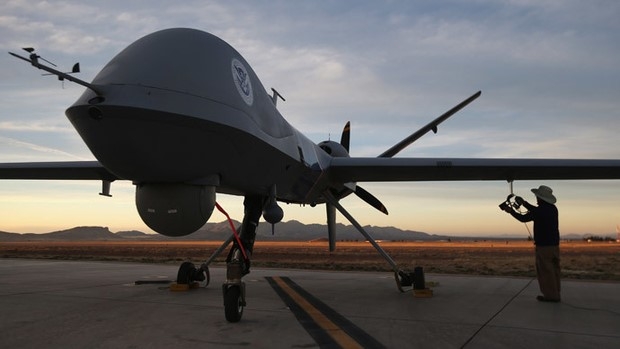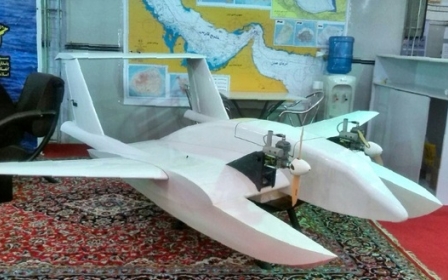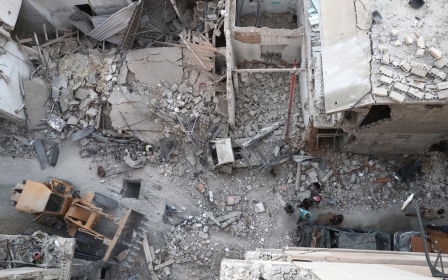ANALYSIS: Just where are the US drone bases in North Africa?

For a year now, not a month has gone by without the Flightradar24 flight supervision site detecting a sortie in Northern Africa or the Sahel by an ISR (Intelligence, Surveillance, Reconnaissance) aircraft, capable of filming what is happening on the ground at both day and night in high resolution. And this is without even a hint that the US has installed its own independent drone base in the region.
After the US was revealed last month to be spending $100 mn on investments in a drone base in Agadez, northern Niger, it is now Tunisia's turn to be cited as a potential operations hub for its drones. A US official, speaking anonymously about an operation that had not previously been made public, this week told the Washington Post that Washington has sought access to a drone base in the North African country to fix a critical intelligence "blind spot": Libya.
Tunisia, however, insists that it is not hosting a US base. Rather, defence ministry spokesperson Colonel Balhassen Oueslati said that military cooperation between Tunisia and the US entails a "training programme" on the use of sophisticated reconnaissance and control equipment.
This tallies with Washington's usual practice in the region: send in small units to join local armed forces, who can then choose whether to take part in reconnaissance operations.
The mysterious island of Pantelleria
This is the case in Morocco: the US Afican Command (AFRICOM) - actually headquartered in Germany - has, for several years, used a part of the Guelmim air base in Southern Morocco for air surveillance activities. This is also the case in Mali and Burkina Faso, where France and the US retain a clear presence in terms of reconnaissance.
However, Western powers have also retained capacity for intervention in European enclaves close to Northern Africa.
Luqa international airport in Malta has become a hotbed for Italian, French and US aviation to undertake surveillance operations in the Gulf of Sirte, often under the cover of operations launched by the EU border agency Frontex to control unauthorised migration.
But the most mysterious position, used by US intelligence forces to watch over the Tunisian and Libyan skies, remains Pantelleria.
This small Italian island, barely 60 km off the coast of Klibia in Tunisia, has become a busy offshore platform for private air intelligence companies, who rent aircraft to the US but also to other countries like France and Italy.
Under the cover of generic names like CAE Aviation – whose Fairchild Merlin III propeller reconnaissance aircraft crashed in Malta this week, allegedly with French spies on board – or Aircraft Logistics Group, they spy both day and night over Mount Chaambi in Tunisia or the villages surrounding Misrata in Libya.
Additionally, the Rota and Moron bases in Spain - fully funded by the US - would be the main US hubs in the event of any military action in northern Africa.
Tamanrasset, a dream base for the US
Is this also the case for Algeria? The US had, well before the rest of the region, done all that they could to rent the Tamanrasset air base, in the extreme south of the country.
Ideally located and offering coverage of the entire Sahel-Sahara zone, it also offered the advantage of having been constructed by US firm BRC, a subsidiary of Halliburton, according to NATO standards.
Algiers was at one point a favoured destination for high-ranking officials from the US army, intelligence agencies - including the CIA and the NSA - and officials from the secret diplomatic services. Their only aim was to convince their Algerian counterparts to intensify “cooperation against terrorism,” or rather, to adhere to the US vision of the “war against terror”.
Certain high-ranking US officials appeared to have already shaken hands behind the scenes on a deal to plant both their feet firmly in the Sahel, and even expected to use the Tamanrasset base for operations over and above simple routine reconnaissance.
But since then, the Arab Spring uprisings and NATO's intervention in Libya seem to have put this new style of Algerian-US cooperation on shaky ground. In July 2012 Algiers, in a radical change of tone, officially refused to discuss renting out military bases. This message was relayed not only to the Americans, but to all foreign forces who had expressed their intentions.
Surveillance of the desert, an impossible challenge
To understand the main reason for the US strategy of spreading drones across the region, it is necessary to look back at the actual capacities of Reaper drones, which are largely used in the Sahel.
Firstly, even with around a thousand pilotless planes continually in flight, it would still only be possible to cover a tiny percentage of this immense region, which covers 3 million square kilometres.
Their use would, therefore, be limited to surveillance of roads and water points, or to bombing strategic targets. This is the difference between the presence and absence of drones in the region.
“By expanding the number of bases, the US army is gaining the capacity to strike targets within a few minutes or hours. [These can be targets] that were not covered during previous reconnaissance or intelligence flights in the field,” an Algerian soldier, who spoke on condition of anonymity, told MEE.
This is what the US lacked during the 2012 Benghazi attacks, which cost the life of ambassador Chris Stevens and during which there was a two-hour wait to rush a drone from a base located in northern Italy.
The challenge now for the US lies in finding a way to undertake surveillance in an area so large that it becomes practically impossible. It needs to maximise its chances of coming across hubs of armed rebels, but also have a precise vision of what is going on in Libya.
And now Algeria, too, by equipping itself with a telecommunications satellite and preparing to purchase a large quantity of Chinese CH4 and UAE Yabhon United 40 armed drones, is hoping to get involved in the fight and have the resources to watch and intervene outside of its own borders.
New MEE newsletter: Jerusalem Dispatch
Sign up to get the latest insights and analysis on Israel-Palestine, alongside Turkey Unpacked and other MEE newsletters
Middle East Eye delivers independent and unrivalled coverage and analysis of the Middle East, North Africa and beyond. To learn more about republishing this content and the associated fees, please fill out this form. More about MEE can be found here.




